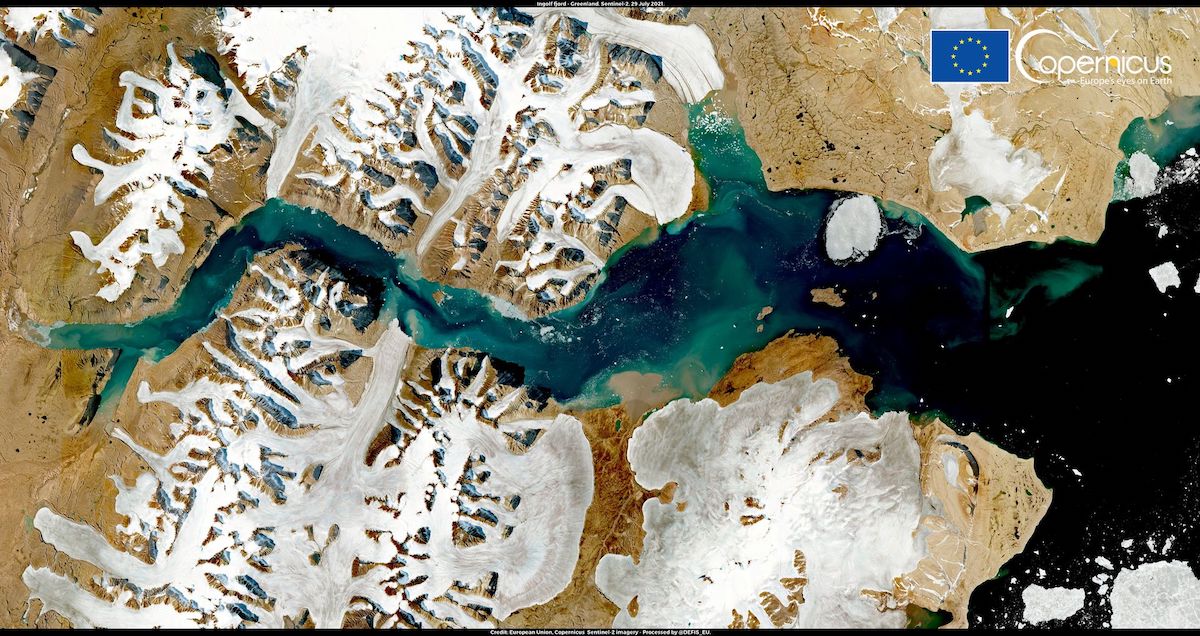While there are still plenty of people who are willing to debate whether or not global warming is actually a real thing, 2021 is making it much more difficult for them to continue to live in denial. Over the course of the first half of the year we’ve seen massive floods in nearly every corner of the globe, unprecedented heat waves, numerous wildfires, and the onset of mega-droughts. All of these disasters have been predicted for years of course, but now they seem the are coming at an accelerated rate and with more intense ferocity.
But if these catastrophic events haven’t been enough to convince you that our planet is warming at an astounding rate, perhaps you’ll find proof on the world’s largest island. Last week, the impact of climate change on Greenland was felt in a staggering way thanks to a historic heatwave that will leave its mark for years to come. On Tuesday, July 27 temperatures soared, melting off enough ice to cover the entire state of Florida in 2 inches (5 cm) of water.

Massive Melt Off
It has been a long and warm summer in the Arctic, with record temperatures being set in Alaska, Northern Canada, Siberia, and elsewhere. Greenland has felt that warmth as well, with a slow, steady melt off taking place over the past few months. But last Tuesday, the cumulative effects of that warmth seemed to have taken its toll at last, with the eastern half of the large landmass almost completely ice free from its northern to southern tip.
Climatologists estimate that between July 25 and July 27, Greenland lost more than 18.4 billion tons of surface mass due to the loss of ice. Of that number, 8.5 billion tons disappeared on Tuesday alone. Most of that ice turns to water and is carried to the North Atlantic by rivers and streams, contributing to the slow rise in ocean levels around the globe.
The rise of sea and ocean levels has long been a predicted side effect of climate change and now it seems to be happening. As more and more ice is permanently removed from Greenland and the polar regions of the planet, water levels are expected to rise between 1 – 4 inches (2.5 cm – 10 cm) over the course of the next decade. That’s enough to put coastal towns and cities in jeopardy thanks to higher tides and more significant storm surges.

Third Extreme Melt
This isn’t the first time that Greenland has experienced a major melt off in a short span of days. In fact, it has happened twice in the past, with the most recent taking place back in 2019. That year, the island lost about 532 billion tons of ice in total, bring global sea levels up by 1.5 mm as a result.
The 2021 melt doesn’t look like it will rival the 2019 version in terms of pure tonnage of ice lost. That said, this year’s meltdown does cover a larger area of land than its predecessor, an indicator that the ice is thinner and more susceptible to the heat than it was in the past. Because of this, Greenland is likely to be without ice on a more consistent basis, with annual winter accumulations unable to replenish the supply.
According to CNN, the current ice coverage on the island is at the lowest that we’ve observed during the satellite era, which began back in the 1970s. That’s when NASA and other climate research organizations, started using satellites to observe the Earth’s surface. Right now, the prognosis for the future of Greenland’s glaciers and icecaps isn’t great as they are all in mass retreat.
Not Too Late to Act
While the outlook for the planet looks dire, many climatologists and researchers say that it isn’t too late for us to reverse the impact of climate change on our planet. Right now, the continued release of CO2 into the atmosphere appears to be accelerating that impact, speeding us towards disaster. But if we can find ways to curb emissions and scrub the atmosphere of excess carbon, we still have a chance to avoid catastrophe.
“While such events are concerning, the science is clear,” Thomas Slater, a glaciologist at the University of Leeds told CNN. “Meaningful climate targets and action can still limit how much the global sea level will rise this century, reducing the damage done by severe flooding to people and infrastructure around the world.”
Of course, this all hinges on the fact that we need to start acting now, before we reach the tipping point. Because once that occurs, there is a pretty good chance that the planet will survive and continue on, healing itself over thousands of years. The difference will be, humans simply won’t be around to witness it.
Read more about Greenland’s very bad day by clicking here.
- Gear Review: The Xero Scrambler Mid is an Ultralight Hiking Shoe for Spring - March 1, 2023
- Gear Review: Yeti Roadie 48 Wheeled Cooler - August 18, 2022
- Kristin Harila Continues Pursuit of 8000-Meter Speed Record - August 16, 2022

Thank you for posting about this incredible issue and the opportunity to act Kraig.
It is scary stuff, but important to share for sure. Thank you Majell!